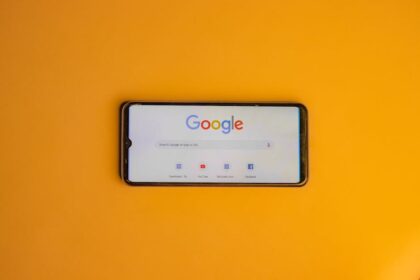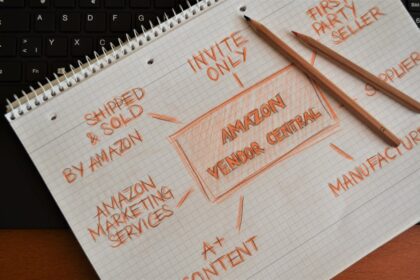The symbiotic relationship between page speed and OnPage SEO is a cornerstone of effective digital marketing strategy. While traditional OnPage SEO focuses on elements like keyword usage, title tags, meta descriptions, content quality, and internal linking, the modern search engine landscape increasingly weights user experience signals, with page speed being paramount. Google, in particular, has consistently emphasized speed as a critical ranking factor, embedding its importance within initiatives like Core Web Vitals and mobile-first indexing. Understanding this intricate connection is not merely about optimizing for a single metric but about cultivating a holistic web presence that satisfies both algorithms and human users.
The Foundational Role of Page Speed in Search Engine Algorithms
Page speed, fundamentally, is a measure of how quickly content on a web page loads. It encompasses various metrics, including Time to First Byte (TTFB), First Contentful Paint (FCP), Largest Contentful Paint (LCP), First Input Delay (FID), and Cumulative Layout Shift (CLS). Google has progressively integrated these metrics into its ranking algorithms, moving beyond a simple “fast or slow” binary to a more nuanced understanding of user-perceived performance. The 2010 “Speed Update” first signaled its importance for desktop, followed by the 2018 “Speed Update” for mobile, culminating in the 2021 Page Experience Update, which formalized Core Web Vitals as critical ranking signals. This evolution underscores a clear message: a fast website is not just a nice-to-have; it’s a foundational requirement for robust OnPage SEO.
Core Web Vitals: The Direct Link to OnPage SEO Metrics
Core Web Vitals (CWV) are a set of specific, quantifiable metrics that Google uses to assess user experience directly related to loading, interactivity, and visual stability. These metrics are:
-
Largest Contentful Paint (LCP): Measures the time it takes for the largest content element on the page (e.g., an image, video, or large block of text) to become visible within the viewport. A good LCP score is under 2.5 seconds. For OnPage SEO, a poor LCP suggests slow server response times, unoptimized images, render-blocking JavaScript or CSS, or slow-loading web fonts, all of which directly impact the user’s immediate perception of content availability. If the main content isn’t visible quickly, users may bounce, signaling a poor user experience to search engines and diminishing the perceived value of the content, regardless of its textual quality. Optimizing LCP involves image compression, lazy loading, reducing server response time (TTFB), preloading critical resources, and minimizing render-blocking resources.
-
First Input Delay (FID): Measures the time from when a user first interacts with a page (e.g., clicks a link, taps a button) to when the browser is actually able to respond to that interaction. A good FID score is under 100 milliseconds. FID is crucial for OnPage SEO because it directly relates to a page’s interactivity. If a user tries to interact with a page but experiences a noticeable delay, it frustrates them. This frustration translates into higher bounce rates and shorter dwell times, both negative signals that can subtly impact how search engines evaluate the page’s utility and therefore its OnPage SEO strength. Long-running JavaScript tasks, unoptimized third-party scripts, and excessive DOM size are common culprits for poor FID. Addressing these issues makes a page feel snappier and more responsive, enhancing the user experience and bolstering OnPage SEO efforts by ensuring users can engage with interactive elements like forms, navigation, or filters.
-
Cumulative Layout Shift (CLS): Measures the sum of all individual layout shift scores for every unexpected layout shift that occurs during the entire lifespan of the page. An unexpected layout shift occurs when a visible element changes its starting position from one rendered frame to the next. A good CLS score is under 0.1. From an OnPage SEO perspective, CLS is paramount for content readability and usability. Imagine trying to read an article, and as you scroll, images or ads suddenly load and push the text around, causing you to lose your place or click on the wrong element. This is a highly jarring experience. Pages with high CLS are perceived as unstable and unprofessional, leading to user abandonment. For content-heavy pages, in particular, a stable layout is vital for consuming the OnPage content effectively. Common causes include images or video elements without specified dimensions, ads, embeds, or iframes dynamically injected without reserving space, and dynamically injected content causing existing content to reflow. Mitigating CLS ensures a predictable and pleasant reading experience, allowing users to fully engage with the OnPage content without frustration, thus reinforcing its SEO value.
Page Speed’s Indirect Impact: User Experience Metrics and Their SEO Ramifications
Beyond the direct algorithmic impact of Core Web Vitals, page speed profoundly influences a range of user experience metrics that search engines monitor closely. These indirect signals, while not always explicitly defined as ranking factors, correlate strongly with OnPage SEO performance.
-
Bounce Rate: This is the percentage of visitors who navigate away from a site after viewing only one page. A slow-loading page is a primary driver of high bounce rates. If a user clicks on a search result and the page takes too long to load, they are highly likely to hit the back button. A high bounce rate signals to search engines that the page did not meet the user’s expectations or was difficult to access, irrespective of the quality of its OnPage content. Conversely, a fast-loading page keeps users on the site, allowing them to engage with the OnPage content, explore other pages, and ultimately reduces the bounce rate, sending positive signals to search engines about the page’s utility and relevance.
-
Dwell Time (or Session Duration): This refers to the amount of time a user spends on a page after clicking on it from the search results, before returning to the SERP. A longer dwell time generally indicates that the user found the content engaging and relevant. If a page loads slowly, users might not even stay long enough to discover the value of its OnPage SEO-optimized content. A quick load time encourages users to spend more time reading, watching, or interacting, thereby increasing dwell time. This prolonged engagement is a strong positive signal that the page successfully answered the user’s query, validating its OnPage SEO effectiveness.
-
Conversion Rates: While conversion rates (e.g., sales, sign-ups, lead submissions) are typically business KPIs, they are intrinsically linked to user experience, which is heavily influenced by page speed. E-commerce sites, for instance, see a direct correlation between page load times and sales. A delay of even 100 milliseconds can significantly impact conversion rates. While not a direct ranking factor, a higher conversion rate often implies a better user experience, which aligns with search engine goals of providing high-quality, user-friendly results. A site that converts well is often one that loads fast, providing an optimal environment for the OnPage SEO content to persuade and engage.
-
Page Views Per Session: Fast websites encourage users to explore more pages within a single visit. If navigation is swift and content loads instantly, users are more likely to click through to related articles, product pages, or service descriptions. More page views per session indicate a rich, interconnected site experience that fulfills broader user intent. This increased exploration, facilitated by speed, naturally boosts the overall perceived value of the website in the eyes of search engines, which implicitly supports the OnPage SEO strategies across the entire site.
Page Speed and Crawling Efficiency: The SEO Budget Perspective
Search engines allocate a “crawl budget” to each website, which is the number of pages and the frequency with which a crawler will visit a site. While large sites generally have larger crawl budgets, inefficient crawling due to slow page speeds can waste this budget.
-
Crawl Rate and Frequency: If a website serves pages slowly, crawlers spend more time waiting for responses and less time crawling actual content. This means fewer pages might be crawled and indexed during a given period. For sites with frequently updated content or a large number of pages, a slow crawl rate due to poor page speed can lead to significant delays in new content being discovered and existing content being re-indexed with updates. This directly impedes OnPage SEO efforts by delaying the recognition of fresh, optimized content.
-
Resource Management for Crawlers: Googlebot is designed to be efficient. If it encounters a slow server or sluggish pages, it may reduce its crawl rate for that site to avoid overloading the server. This self-preservation mechanism for the crawler directly impacts how quickly your OnPage SEO changes are reflected in the index. A faster site allows crawlers to process more pages within their allocated crawl budget, ensuring that your latest keyword optimizations, content updates, and schema markups are picked up promptly.
Mobile-First Indexing and Page Speed: An Inseparable Bond
Google’s shift to mobile-first indexing means that the mobile version of a website is now the primary version used for indexing and ranking. This monumental change magnifies the importance of mobile page speed for OnPage SEO.
-
Primary Evaluation: If your mobile site is slow, unresponsive, or suffers from significant layout shifts, Google will evaluate your entire domain based on this subpar mobile experience, regardless of how fast or well-optimized your desktop site is. This means that OnPage SEO efforts on desktop versions might be undermined if the mobile counterpart is neglected in terms of speed.
-
User Expectations on Mobile: Mobile users have even less patience for slow-loading pages than desktop users. They are often on the go, using varying network conditions. A slow mobile page directly leads to higher mobile bounce rates and lower engagement, impacting the page’s OnPage SEO performance in mobile search results.
-
AMP and PWA as Speed Solutions: While not mandatory, accelerated mobile pages (AMP) and progressive web apps (PWAs) are examples of Google-backed technologies designed to provide lightning-fast mobile experiences. Implementing these can drastically improve mobile page speed, directly benefiting OnPage SEO for mobile queries by ensuring content loads almost instantly, reducing bounce rates, and enhancing overall user satisfaction. Even without AMP or PWA, optimizing for mobile speed through responsive design, image optimization for mobile viewports, and efficient mobile-specific code is paramount.
Technical Optimizations for Page Speed and Their OnPage SEO Significance
Achieving excellent page speed requires a multi-faceted technical approach. Each optimization directly contributes to the core web vitals and indirectly supports OnPage SEO.
-
Image Optimization: Images are often the largest contributors to page bloat.
- Compression: Using tools to compress images (lossy or lossless) without significant quality degradation reduces file size. Smaller image files lead to faster LCP.
- Format: Using modern image formats like WebP (which offers superior compression) or AVIF instead of JPEG or PNG can significantly reduce file sizes.
- Sizing: Serving images in the correct dimensions for the user’s viewport prevents the browser from having to resize them on the fly, saving processing time and bandwidth. This is crucial for responsive design and maintaining visual stability (CLS).
- Lazy Loading: Deferring the loading of images (or other media) until they are about to enter the user’s viewport saves initial load time, improving FCP and LCP. This is particularly effective for long-form content with many images, ensuring the primary content loads quickly while the rest loads on demand. This allows the user to engage with the text content sooner, improving perceived OnPage SEO quality.
-
Minification of CSS, JavaScript, and HTML:
- Removing unnecessary characters (whitespace, comments, line breaks) from code files reduces their size. Smaller files transfer faster, improving overall page load time. For OnPage SEO, this means the content is rendered sooner, making it available for users and crawlers alike.
-
Browser Caching:
- Implementing browser caching allows static resources (like images, CSS, JavaScript) to be stored locally on the user’s browser. For repeat visitors, this means the browser doesn’t need to re-download these resources, leading to significantly faster subsequent page loads. This improves user experience, encourages return visits, and supports the overall stickiness of the OnPage content.
-
Server Response Time (TTFB Optimization):
- Time to First Byte (TTFB) is the time it takes for the browser to receive the first byte of response from the server. A high TTFB delays everything else. Optimizing TTFB involves:
- Choosing a Fast Host: Reliable, high-performance web hosting.
- Efficient Server-Side Code: Optimizing database queries, using efficient programming languages, and reducing server-side processing.
- Content Delivery Networks (CDNs): CDNs cache your website’s static content on servers distributed globally. When a user requests content, it’s served from the closest server, drastically reducing latency and improving TTFB. CDNs are vital for global OnPage SEO reach, ensuring fast content delivery regardless of user location.
- Time to First Byte (TTFB) is the time it takes for the browser to receive the first byte of response from the server. A high TTFB delays everything else. Optimizing TTFB involves:
-
Eliminating Render-Blocking Resources:
- JavaScript and CSS files can block the browser from rendering content until they are fully loaded and parsed.
- Asynchronous or Deferred Loading: Marking scripts as
asyncordeferallows the browser to download them in the background without blocking the initial rendering. - Critical CSS: Extracting and inlining the minimal CSS required for the “above the fold” content (critical CSS) allows the page to render visibly very quickly, improving FCP and LCP. This ensures the user sees your OnPage content almost immediately.
-
Reducing Redirects:
- Each redirect adds an extra round-trip time (RTT) and delays page loading. Minimizing unnecessary redirects (e.g., from HTTP to HTTPS, or non-www to www) streamlines the request process, getting the user to the OnPage content faster.
-
Leveraging Browser Resource Hints:
preload,preconnect,prefetch, anddns-prefetchare directives that tell the browser to perform certain actions earlier than it normally would, anticipating future needs.preload: Fetches a resource (e.g., a critical font or image) that will definitely be needed soon.preconnect: Initiates an early connection to a domain from which resources will be requested.dns-prefetch: Performs a DNS lookup for a domain name earlier.
- These hints can significantly improve LCP and FCP by ensuring critical resources are available when needed, thus enhancing the perceived speed of your OnPage content.
Page Speed and Schema Markup: Enhancing SERP Features
While schema markup itself is a direct OnPage SEO element, page speed can indirectly influence whether your structured data is effectively used by Google to display rich snippets and other SERP features. If a page loads too slowly, especially on mobile, crawlers might struggle to fully parse and understand all the elements, including schema. A fast-loading page ensures that Googlebot can efficiently crawl, parse, and interpret your structured data, increasing the likelihood of earning valuable SERP real estate like star ratings, product information, or event details. These rich snippets not only improve visibility but also increase click-through rates (CTR), which is a powerful indirect ranking signal stemming from superior OnPage SEO presentation.
The Role of JavaScript in Page Speed and OnPage SEO
Modern websites heavily rely on JavaScript for interactivity, dynamic content, and functionality. However, JavaScript is often a primary culprit for slow page speeds.
- Execution Time: Large, complex JavaScript files can take significant time to parse and execute, blocking the main thread and delaying interactivity (poor FID). This means a user trying to interact with an OnPage element might experience frustrating lags.
- Third-Party Scripts: Analytics scripts, ad scripts, social media widgets, and other third-party integrations can add substantial bloat and performance bottlenecks. Each script adds network requests and execution time. While these can be valuable for marketing or user engagement, they must be managed carefully to prevent degrading page speed and consequently, OnPage SEO.
- Code Splitting and Tree Shaking: Techniques like code splitting break down large JavaScript bundles into smaller, on-demand chunks, while tree shaking eliminates unused code. These methods ensure that only the necessary JavaScript is loaded and executed, reducing the initial payload and improving FCP and FID, thus making the OnPage content available and interactive faster.
HTTP/2 and HTTP/3: Next-Generation Protocols for Speed
Network protocols play a fundamental role in how quickly resources are delivered.
- HTTP/2: Introduced multiplexing (sending multiple requests and responses over a single connection), server push (sending resources before the browser requests them), and header compression. These features significantly reduce latency and improve the efficiency of resource loading compared to HTTP/1.1, directly contributing to faster page speeds and more effective OnPage SEO delivery.
- HTTP/3: The latest iteration, built on QUIC, addresses “head-of-line blocking” issues inherent in TCP (which HTTP/2 still uses) and offers improved security and faster connection establishment. As HTTP/3 adoption grows, it will further enhance page speed, particularly in challenging network conditions, ensuring an even more fluid user experience for your OnPage content. Ensuring your server and CDN support these modern protocols is a critical, often overlooked, aspect of speed optimization.
Measuring and Monitoring Page Speed: Tools and Interpretation for OnPage SEO
Effective page speed optimization requires consistent measurement and monitoring. Several tools provide valuable insights:
- Google PageSpeed Insights (PSI): Provides both field data (real user data from the Chrome User Experience Report – CrUX) and lab data (simulated performance data from Lighthouse). It assigns a score (0-100) and provides actionable recommendations categorized by Core Web Vitals and general speed opportunities. For OnPage SEO, PSI is crucial as it reflects Google’s own performance evaluation criteria. A “Good” score on PSI indicates that your page meets Google’s thresholds for a positive user experience.
- Google Lighthouse: An open-source, automated tool for improving the quality of web pages. It audits for performance, accessibility, best practices, SEO, and Progressive Web App compliance. Lighthouse scores are based on lab data, useful for development and testing. It breaks down performance into specific metrics like FCP, LCP, TBT (Total Blocking Time, a proxy for FID), and CLS, offering detailed diagnostics for OnPage SEO performance tuning.
- GTmetrix: Provides a comprehensive analysis of page speed using Lighthouse and other metrics. It offers waterfall charts (showing the loading sequence of resources), performance scores, and detailed recommendations for optimization. GTmetrix helps identify specific files or requests causing slowdowns, enabling targeted optimizations for OnPage SEO.
- WebPageTest: Offers highly customizable tests from various locations, browsers, and connection speeds. It provides detailed waterfall charts, video capture of page loading, and optimization checklists. Its granular data is invaluable for diagnosing complex performance issues affecting OnPage content delivery.
- Google Search Console (Core Web Vitals Report): Crucially, this report in Search Console shows real-world performance data (CrUX) for all URLs on your site that have enough data. It categorizes URLs as “Poor,” “Needs improvement,” or “Good” based on their LCP, FID, and CLS scores. This is the ultimate barometer for OnPage SEO performance concerning speed, as it directly reflects how Google perceives your site’s user experience based on actual user interactions. Monitoring this report is paramount for identifying pages that need immediate speed attention to improve their OnPage SEO standing.
Interpreting Metrics and Actionable Recommendations for OnPage SEO
Merely running tests is insufficient; the key lies in interpreting the results and translating them into actionable OnPage SEO improvements.
- High LCP: Focus on optimizing images (compression, lazy loading, WebP), preloading critical LCP elements, reducing server response time (TTFB), and minimizing render-blocking CSS/JS. For content, ensure hero images or primary text blocks load first.
- High FID/TBT: Tackle long-running JavaScript tasks. Break up large scripts, defer non-critical JavaScript, use web workers for complex computations, and minimize third-party script impact. Ensure interactive elements crucial for user engagement with your OnPage content are responsive.
- High CLS: Ensure all media (images, videos, ads) have explicit width and height attributes. Reserve space for dynamically injected content using CSS placeholders. Avoid inserting content above existing content unless user-initiated. For OnPage content, this means ensuring tables, forms, or media embedded within text do not cause unexpected shifts.
- Slow TTFB: Invest in better hosting, optimize your server-side code (PHP, Python, Node.js, etc.), implement database caching, and consider a CDN. A faster TTFB means Googlebot gets to your OnPage content faster.
- Excessive Network Requests: Consolidate CSS/JS files, use CSS sprites for small images, and leverage HTTP/2 or HTTP/3 to handle multiple requests efficiently. Fewer requests mean quicker loading of your OnPage content.
The Symbiotic Relationship: Page Speed as a Ranking Factor (Direct and Indirect)
It’s crucial to understand that page speed is not a standalone ranking factor in isolation from OnPage SEO. Instead, it acts as an enabling factor, amplifying or diminishing the effectiveness of traditional OnPage SEO elements.
- Direct Ranking Factor (Core Web Vitals): Google has explicitly stated that Core Web Vitals are ranking signals. Therefore, achieving “Good” scores for LCP, FID, and CLS directly contributes to improved rankings. This means that a page with strong OnPage keyword targeting, high-quality content, and excellent CWV will likely outperform a similar page with only good content but poor CWV.
- Indirect Ranking Factor (User Experience): The ripple effect of poor page speed on user experience metrics (high bounce rate, low dwell time, reduced page views per session) sends negative signals to Google. If users consistently leave a slow page, it suggests that the page, despite its OnPage optimization, does not fulfill user intent effectively or provide a satisfactory experience. Over time, this can lead to a devaluation of the page’s ranking potential. Conversely, a fast page encourages engagement, leading to positive user signals that reinforce the page’s OnPage SEO value.
- Competitive Advantage: In a highly competitive niche, where many sites have similar OnPage SEO profiles (good content, relevant keywords), page speed can be the differentiating factor. A faster site provides a superior user experience, which Google prioritizes, thus giving it an edge in search rankings. It’s a key element of comprehensive OnPage optimization that cannot be overlooked.
The Future of Page Speed and OnPage SEO
The trajectory for search engines is towards an even deeper understanding of user intent and experience. As AI and machine learning become more sophisticated, Google’s ability to discern subtle user behaviors caused by page performance will only increase. Future updates are likely to refine current metrics or introduce new ones that capture an even more nuanced picture of user interaction. This means that page speed, intrinsically linked to the user’s ability to consume and interact with OnPage content, will remain a critical component of any successful SEO strategy. Websites that proactively prioritize speed are not just optimizing for today’s algorithms but are future-proofing their OnPage SEO efforts for the evolving web. The commitment to performance should be continuous, treating page speed as an ongoing optimization rather than a one-time fix.











